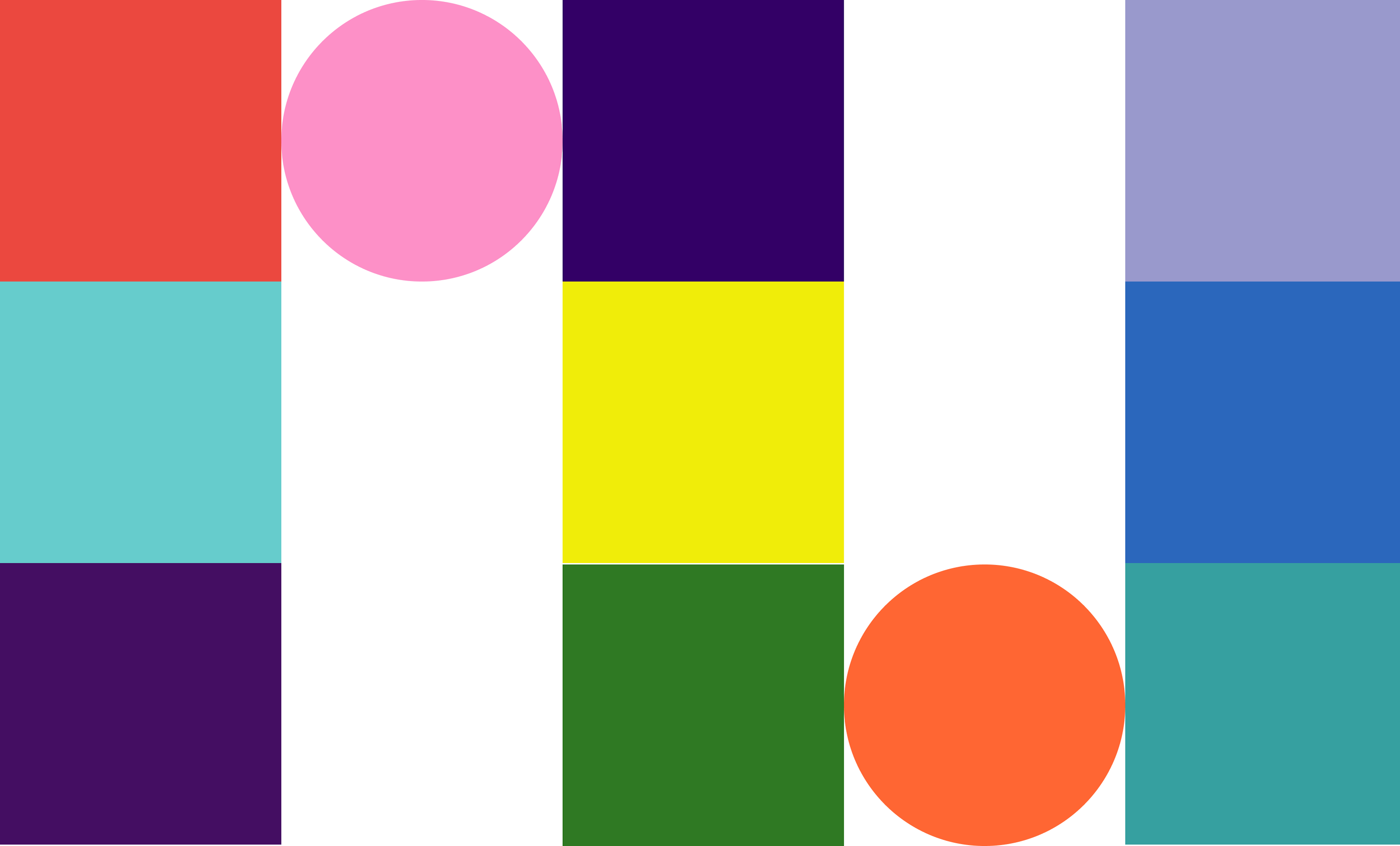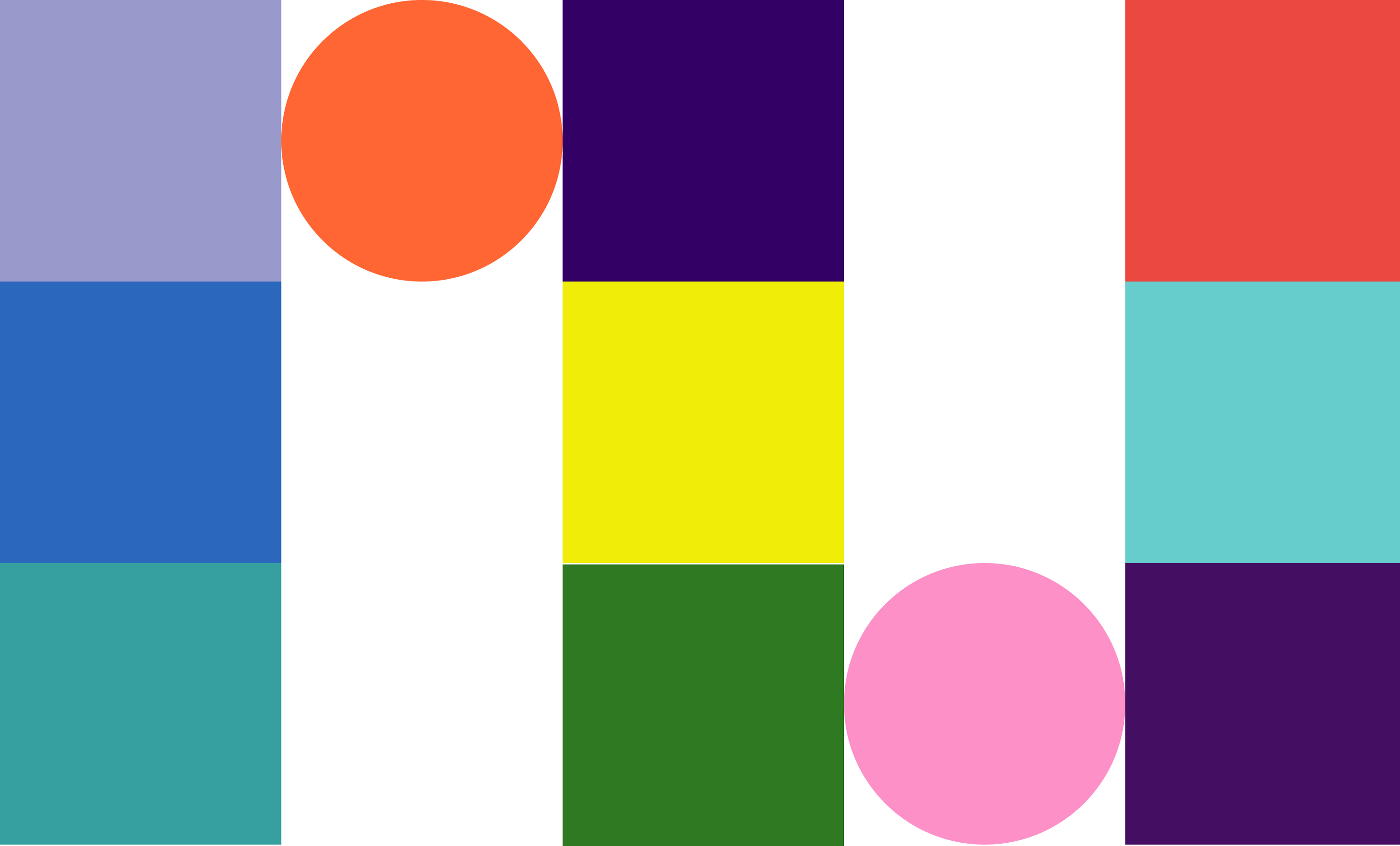Executive Summary
Timeline 6 weeks
Goal Coach is a goal supporting app for college students to reduce snacking and avoid the “freshman fifteen.” Goal Coach helps students be more committed to their health goals through a user-resembling avatar that acts as a supportive coach for the users. The designs in our app focus on promoting preemptive goal setting and giving reminders based on the user’s time and location, in order to support the users in becoming more committed to their goals. We relied on theories that would help increase student self-efficacy for eating healthy as well as remind people of their long-term goals in tempting situations.
Our App involves three stages: Goal Set-Up, Morning Check-Ins, and Just in Time Interventions.
The major function of the Goal Set-Up phase is to introduce the user’s goal and integrate necessary outside plugins to the user’s experience. Goal Coach includes a pre-survey and templates to aid users in creating quality goals. Additionally, During the Set-Up phase, students integrate their student account and their Memoji. Integration with student services allows Goal Coach to provide Just-In-Time interventions according to predictions made from the student’s schedule and assignments. Memoji is used as an avatar coach, and servers to provide a stronger personal connection between the user and the avatar. The first interaction the user has with their Memoji is to record their goal. This recording is used in each morning check-in, as shown below.
Morning Check-In was created based on the idea that morning is the optimal time period for goal setting. Morning Check-ins reiterates the supportive message of remembering users’ goals. Moreover, it asks the user to create a specific smaller scale goal for that day.
Finally, the Just in Time interventions occur at times of ego-depletion, people are most at risk of giving in to temptation, so our hope is to provide support in these times. Through these three main key functionalities, our Goal Coach App intends to focus on supporting the users to become more committed to pursuing their own health goals.
Check out our prototype at the bottom of this page!
Team
Erin Fuller, Justin Britton, & Jee Rim
My Contribution
As a designer... I was responsible for the visual design of the app, the use of Memoji, the separation of the JIT and overarching interventions, and the video prototype.
As a researcher... I conducted extensive academic research on the cognitive psychology that motivated the design, led contextual interviews with college students, led usability testing of final product. Wrote research guides and questions.
As a teammate... I implemented proven brainstorming and decision making structures that increased group efficiency and enabled more democratic decision making.
Problem
We aimed to address health issues through our intervention and decided to focus our efforts on diet and nutrition. The scope was narrowed to a goal supporting app as a solution for college freshmen to reduce snacking and avoid the “freshman fifteen” - although we allude to a larger ecosystem this app could be part of. Our solution helps students who have goals to eat healthier yet struggle to maintain these goals. The design implementations in our solution promote preemptive goal setting and give reminders based on the user’s time and location, in order to enable the users to keep track of their goals. The overall purpose of our app is to provide support and help users stay committed to their goals.
Solution
The solution we created is an app-based solution for college students to reduce snacking. The app is framed not as a “nutrition” or “diet-tracking” application, but as a service for users to support their goal of reducing snacking. Users are supported by themselves, as they upload an avatar of themselves to act as their very own Goal Coach. The major aims and objectives of our final solution were to: facilitate effective goal setting, encourage choices that are consistent with goals, support college students managing their diets, and increase self-efficacy for students. These aims and objectives are supported by our five key app features that will be expanded upon in the process documentation: Avatar of User, Just-in-time Reminder Notifications, Link to Student Profile, Goal-making Template, and Daily Goal Commitment Check-Ins.
There are three stages of use for Goal Coach: (1) Initial Set-Up, (2) Morning Check-Ins, and (3) Just-In-Time Interventions. While we will go into detail on the design of each stage, the best way to understand how a user would use the app over time is through a customer journey storyboard.
USER FLOW STEP 1
Initial Set-Up.
A CMU first year dorm RA shows first years during O-Week a habit supporting app, she notes that it helped her avoid the freshman 15.

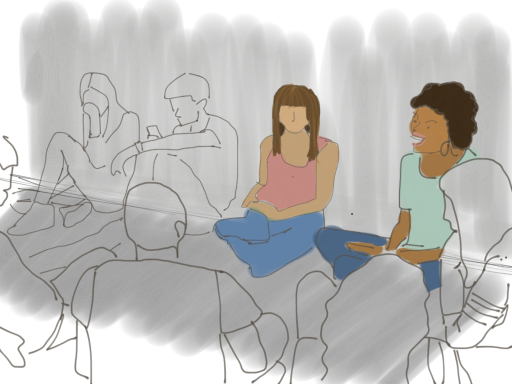
We idealize that this app would be encouraged to incoming college freshmen by their Residential Assistant (R.A.) or other dorm or orientation staff as a way to help them set goals in their new-found independence. Users will have the option to log in with their school credentials - we did this to gain access to data like their class and exam schedule so just-in-time interventions could be deployed in a state of perceived ego depletion.
Next, users will do a baseline survey about their overall health - we did this, firstly to get a baseline that the users could refer back to check their progress, but more importantly, this helps the user to think about their high-level and abstract goals so they can frame their goals in ways that will motivate them more later on. This is based on Construal Level Theory and aims to set up reminders where users will construe their goals at a high level. Afterward, the user is able to write their own goals. This is set up in a template form to make sure that the goals are written in a way that will be effective. It says, “My goal this semester is ...” and then users fill out the section, and then, “I want to do this because …” and users finish that statement. This helps the user make goals that are time-based and still relevant to their overall “why”. We had users record goals this way, including the reasoning behind their goals, as this helps users construe their goals at a high level later on.
To finish off the set-up, users import their already established Apple Memoji, future support can be for “Bitmojis” as well to increase accessibility across platforms. It is actually quite conducive to our implementation that users would already have access to an avatar like a Memoji because the user would have created this before and therefore had time to develop an attachment to that digital version of themselves. We decided to use an avatar that resembles the user in appearance based on research that showed that people have positive connections to look-alike avatars, and are more motivated to complete tasks as that avatar. Once their Memoji is imported, the user records their goal they just wrote as their Memoji talking and then are sent off with an encouraging message from their avatar. At this point going forward, the avatar is integrated as much as possible, providing to the user a role as both “self” and “coach”.
USER FLOW STEP 2
Morning Check-In.
Mia gets the morning alert to reaffirm her goals as she wakes up.
The morning task is short and efficient so Mia is able to complete it while brushing her teeth.
Mia eats a healthy breakfast and then runs to class.

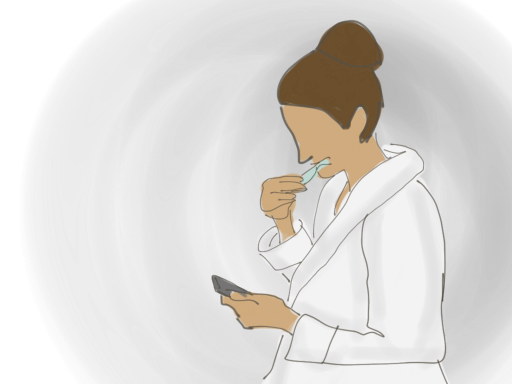
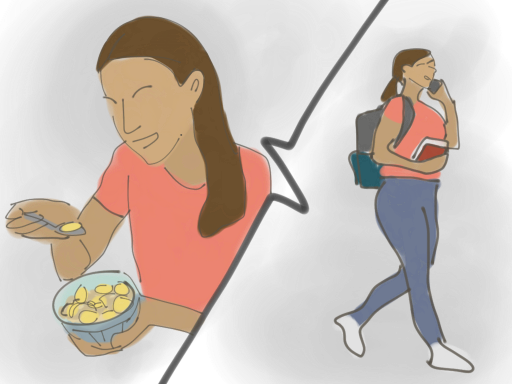
.
Each morning, users will get a notification to check into the app and remind themselves of their goals. One element of why this step takes place in the morning is the basis of ego-depletion. Because it becomes harder to exhibit self-control when the ego is depleted, and people’s egos are depleted throughout the day, morning is the optimal time for goal motivational setting. The users’ avatar will play the recording of the goal they set at the beginning of the semester and then asks them for one specific way the user can work towards their overall goal. Like the initial set-up stage, we provide a template to start, “To support my goal today I will ...”, and the user completes the statement. This specific goal-setting feature is directly based on studies that show how specific implementation intentions are very effective in goal automating and success. Setting specific goals each day after hearing a long-term high-level goal would be most effective for a user to accomplish their goal.
Users can also choose to reuse a past goal if they do not feel like thinking of a new daily implementation - this is an attempt to ease the possibility of abandonment from high effort. Users are then encouraged by a positive “reaction” from their avatar as a final push for the day. The supportive language and positive encouragement, during the act of setting a goal, are meant to help build self-efficacy among our users. This was something we identified in user and psychology research as an area to target with our intervention. The idea is to make people feel confident they have the ability and are taking steps to achieve their goals.
USER FLOW STEP 3
Just in time.
Mia forgot she had a midterm in her biology class! She works until the end of the class period on the exam and when she leaves she does not feel confident she did well.
She passed entropy, the campus convenience store, on the way back to her dorm. She stops in to get a snack.
While looking at pop-tarts, her guilty pleasure, Mia gets a push notification from the app.
The app is connected to Mia’s Canvas account and location and used that data to infer a state of ego depletion and prompt Mia to stick to her goals.
Mia sticks to her goals in the situation and was really proud of herself.

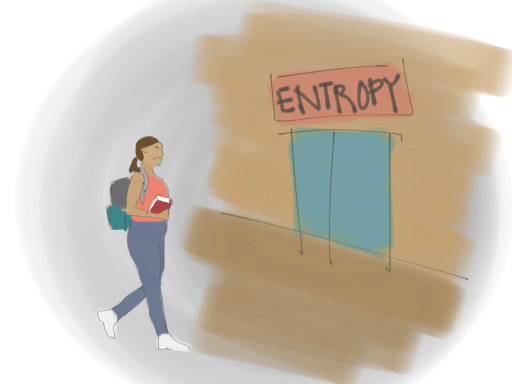

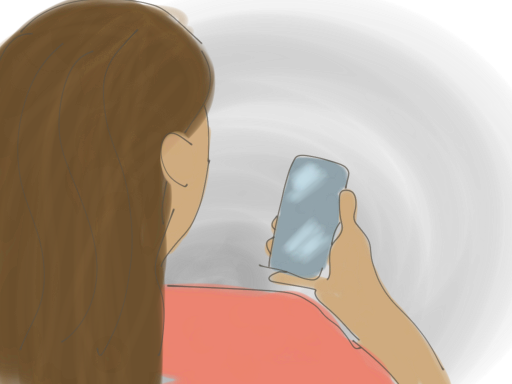
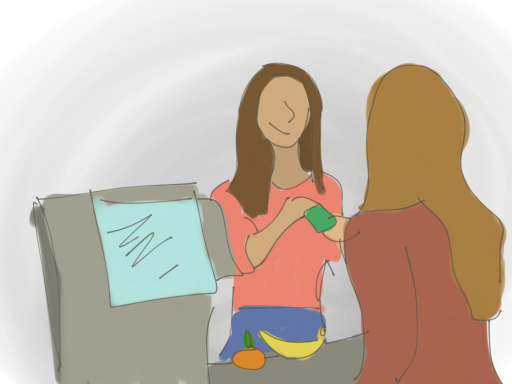
.
Finally, we wanted to have a strategic intervention as a moment of “just-in-time” guidance. We combine data of when users may be more ego-depleted, after a large exam or poor mid-term grades, and the users’ location data, to see when they are in a dining location on campus. Our research shows that in times of ego-depletion, people are most at risk of giving in to temptation, so our hope is to provide support in these times. We intervene at a time that needs intervention, so the users are not overwhelmed with false interventions which could lead to all notifications being ignored.
The user would receive a notification along the lines of, “Let’s remember our goals when getting food at ABP [a popular on-campus dining location]!”. Even this is enough of a prompt for some users to remember their goal, but if they choose to open the notification the same video of the avatar speaking the user’s goal is played. This intervention applies a set of key theories. This stage employs Construal Level Theory in that the remainder of one’s high-level goal makes the user construe their goal more abstractly and reflect on long-term consequences right before making a decision. Additionally, the avatar serves to present a third-person representation of the self. This is meant to recreate the effect found in a study where imagining oneself in the third-person helped users follow through with their goals. Another important aspect of the avatar resembling the user is activating self-awareness. Similar to how looking in a mirror can remind someone of their identity, seeing oneself in the app would result in activating self-awareness and make people think about their beliefs, such as a goal they hold.
Process
,
Problem Scope.
.
Our group was formed around a common interest in health and exercise. We quickly realized that an intervention that tackled both topics in a general manner would be far too broad to properly intervene upon; therefore, we made several initial decisions to limit the scope of our project. This resulted in choosing nutrition over fitness as a subject of study, as nutrition has a more direct impact on more people and choosing college students as our target demographic, given they are the most immediate population to test on and the health phenomenon of the “freshman fifteen” affects most college students.
From there we came up with several ideas surrounding the topic of nutrition and diet education for college students.
Topic / Nutrition
Demographic / Freshman in College
Problem / "Freshman 15"
Our initial conceptualization of a solution was an app to track food consumption - the effects of food intake would be visualized by the reactions of a non-human avatar. We chose to use a non-human avatar because we thought the inherent differences between our users and a non-human would create enough psychological distance to make tackling the touchy subject of dieting easier.
Initial Ideations.
Our initial feedback from our classmates and Professor Kauffman indicated that better relating the solution space to our chosen demographic should be a priority, as addressing our solution to our users would lead to more targeted solutions.
With this in mind, we interviewed ten college students from a range of universities to learn how they manage their diets and what their campus dining experience getting is like. Through this process, we uncovered that
College students felt they needed support in making eating decisions that were in their best interest, as the pressures of rigid meal plans, increased freedom, and increased stress make it harder for them to make choices in line with their health goals.
The emphasis our users placed on the idea of self-control, along with Professor Kauffman’s suggestions, led our initial iterations to focus on the idea of self-control.
Moreover, these interviews indicated that a solution for college students should tackle either controlling meal proportions or excessive snacking behaviors. We decided to focus our intervention specifically on snacking due to the differences between college meal plans at each university, making it difficult to provide a uniform solution for meal proportions. Moreover, snacking is an easier behavior to address than changing one’s meal structure.
After further research on avatars, we reversed our initial decision to maximally separate the user from the avatar, as we realized that avatars that looked like the user are very helpful in getting users to engage deeply with the solution.
Low-Fidelity Iteration.
After reviewing a range of prototypes produced by our group, we chose to pursue the ideas that seemed most in-line with the needs of our users and previous research studies we reviewed. Given that sticking to goals was the primary struggle of college students, it made sense for our intervention to include goal setting as a preemptive measure, rather than reactive. Furthermore, since literature indicated that it was important to prevent both long and short term distractors from inhibiting goal maintenance, we decided to pursue an intervention with two parts - a preemptive measure and a just-in-time solution.
Additionally, user feedback from the initial designs indicated that push notifications were positively received as a just-in-time solution and that users preferred solutions that were supportive of their goals over those that emphasized the consequences of their actions.
Mid-Fidelity Iteration.
At this stage, we received feedback from an in-class interview session and user testing. Users commented that there should be more support and instructions for setting up a goal. They also didn’t see the point of the avatar being there. We revised our low-fidelity iterations to include more interactivity and playfulness to better involve the avatar of the user and reduce the clinical feeling of our solution, based on reactions to previous iterations. The goal writing process was templated to force focus on long-term goals that are specific and attainable. This also now gives them direction for making goals.
Progressing to our mid-fidelity iterations, we further narrowed the project scope to support the users’ goals. Relating to Professor Kauffman’s feedback, we incorporated the avatar to become a goal supporting coach. We increased engagement through replaying the avatar recorded goals and encouraging language between the avatar and the users. The avatar plays a role in our solution that resonates with our previous research on the user-avatar relationship. By including a Memoji that already resembles the users, the app now more deeply engages them leading to increased motivation to maintain their goals.
Hi-Fidelity Iteration.
In our final refined prototype, in addition to changing the aesthetics and cleaning up the design for demoing, we made changes for each stage of our app. Throughout the app, positive inclusive language, such as “We got this!”, was introduced to reinforce the connection with the user’s avatar and create a more personal support system, and the avatar began to give positive feedback to the user making the experience more fun and engaging. Onboarding was refined to highlight the integration of student life by incorporating a sign in with the user’s university credentials. The morning check-in was updated with an opportunity to set implementation intentions right after the user was reminded of their high-level goals. Smaller updates included a pause/play feature, based on user feedback, to maintain privacy if playing the just-in-time section in a public setting.
Generally, the feedback on our persuasive intervention was positive; surveyed users felt that, if used properly, Goal Coach would be an effective tool. Some raised concerns about how long it would take to write a new goal each day. To remedy this issue, we added the “pick a previous goal” option so that users would not need to write anything when they choose their specific daily goal.
Reflection
Ultimately, the eating habits that students develop during this period of their lives have lasting consequences. Therefore, if Goal Coach can successfully aid first-year college students in developing smarter habits, then it will, theoretically, contribute to a lifetime of better choices regarding one’s health.
To evaluate how our app affects behavior, we brainstormed a study that could be given once the app was deployed. The study would separate student participants into a control group that did not use goal coach and an experimental group that did. Experimenters would observe participants at dining locations on campus and note when reminders were received and the food choices made by participants. Later analysis would test a difference in healthy eating between the two groups to conclude if our intervention was effective.
More generally, to measure success if this was a fully deployed application, we would derive “success” from a number of quantitative statistics we would gather from the app. Google’s HEART Framework is a great starting off point to measure, define and improve upon a user’s experience. Happiness is defined by how the users feel about your product and can be measured by user satisfaction surveys, app ratings and reviews, and net promoter scores. Next, engagement is how often are people coming back to use the product. This can be measured by the number of visits per user per week, session length, or key action, like the number of times a user engages with the Just in Time intervention. Third, adoption, is how many people fully complete the onboarding process and become regular users. Adoption is measured by the number of new users over a period of time or if after a feature roll-out, the percentage of users using a new feature. Next, we could measure retention - the percentage of users are returning to the product, measured by churn or the rate of attrition. And finally, we would measure task success. We would ask can users achieve their goal or task quickly and easily. Task success is measured by factors like efficiency (how long it takes users to complete the task) effectiveness (percent of tasks completed), and error rate.
In the future, we see Goal Coach being implemented by universities during their respective freshman orientation programs. Orientation is often a time when students are able to learn about the resources available to them at their school, from peer tutors to health services. If introduced during this time, Goal Coach would be seen by students as a tool that they could use whenever they needed it.
We believe Goal Coach ultimately has the potential to be a larger encompassing service. Though we specifically focused on a snacking situation, with theories more related to support that situation, this could be deployed on many different tracks of goal and habit support, although interventions would likely be tailored with psychological theories more relevant to other goals. We would like to see Goal Coach expanded to cover other topics that college students may want to set goals around, such as academic or social goals.
